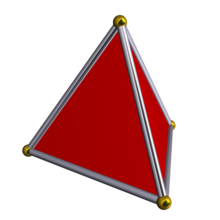Soundfield microphone: Difference between revisions
Thas is not the Soundfield microphone as described here. |
|||
| Line 53: | Line 53: | ||
* [http://www.oktavausa.com/ProductsPages/Ambient4DMic.html Oktava], a Russian mic manufacturer whose range includes a soundfield mic |
* [http://www.oktavausa.com/ProductsPages/Ambient4DMic.html Oktava], a Russian mic manufacturer whose range includes a soundfield mic |
||
* [http://www.ambisonia.com/wiki/index.php/Microphones#Home_made_tetrahedrons Home built soundfield mics] |
* [http://www.ambisonia.com/wiki/index.php/Microphones#Home_made_tetrahedrons Home built soundfield mics] |
||
* [http://www.josephson.com Josephson Engineering] makes a stereo/surround microphone that produces B-format signal natively from omni and figure-8 elements |
|||
{{audio-tech-stub}} |
{{audio-tech-stub}} |
||
Revision as of 21:42, 20 August 2010
The Soundfield microphone is an audio microphone composed of four closely spaced subcardioid or cardioid (unidirectional) microphone capsules arranged in a tetrahedron. It was invented by Michael Gerzon and Peter Craven, and is a part of, but not exclusive to, Ambisonics, a surround sound technology. It can function as a mono microphone, a stereo microphone or as a surround sound microphone.
Signals
A Soundfield microphone kit, consisting of the microphone and a signal processor, produces two distinct sets of audio signals called A-Format and B-Format.
A-Format

The first set, the A-Format, is produced by the Soundfield microphone itself and consists of the four signals from the microphone capsules. These four signals are not intended to be used without further processing. The A-Format is normally transformed into the second set of audio signals, the B-Format. This process is described in references 1 and 2. Depending on the microphone model, this transformation can be performed in either hardware or software.
B-Format
The B-Format is the standard audio format produced by a soundfield kit. It consists of the following four signals:
- W - a pressure signal corresponding to the output from an omnidirectional microphone
- X - the front-to-back directional information, a forward-pointing velocity or "figure-of-eight" microphone
- Y - the side-to-side directional information, a leftward-pointing "figure-of-eight" microphone
- Z - the up-to-down directional information, an upward-pointing "figure-of-eight" microphone
These are the constant (W) and linear (X, Y, Z) terms in the multipole expansion of a function on the sphere – in effect, it approximates the wave field on a sphere around the microphone.
It is possible to recreate the three dimensional soundfield, however the soundfield microphone particularly shows its versatility in a stereo or mono application. For example, a forward-facing cardioid is produced by. By combining the signals in various proportions, it is possible to derive any number of first-order microphones, pointing in any direction, before and after recording. For instance, provided the W, X, Y and Z signals are recorded separately, it is possible to pinpoint the microphone to a certain response from the audience even after recording. Examples of software that perform these calculations are Visual Virtual Microphone, SoundField's Surround Zone and Ambisonic Studio's B2X decoders plug-ins.
In other words, the B-format recording can be decoded to model any number of microphones pointing in arbitrary directions: each microphone's pattern can be selected to be omnidirectional, cardioid, hypercardioid, figure-of-eight, or anything in between. This can be done live or in post-production (after the recording is made).
The playback configuration is equally flexible. Again in post-production, the B-format recording can be decoded to any number of speakers arranged in both the horizontal and vertical planes.
Note however that this information only allows the direction of sound at the microphone to be reproduced – microphone responses pointing in any direction can be synthesized, but it does not allow the reconstruction of what a microphone at a different point in space would record. To do that requires reconstructing the wave field in more detail (as in wave field synthesis).
References
- Michael A. Gerzon (1975). "The Design of Precisely Coincident Microphone Arrays for Stereo and Surround Sound". 50th Convention of the Audio Engineering Society. pp. Preprint L-20.
{{cite conference}}: Unknown parameter|booktitle=ignored (|book-title=suggested) (help) - Peter G. Craven and Michael A. Gerzon (1975). "Coincident Microphone Simulation Covering Three Dimensional Space and Yielding Various Directional Outputs". US 4042779.
{{cite journal}}: Cite journal requires|journal=(help); External link in|publisher=|publisher=at position 1 (help)
External links
- SoundField Limited, a soundfield mic manufacturer
- AGM Digital Arts GmbH, a soundfield mic manufacturer
- Core Sound LLC, a soundfield mic manufacturer
- Oktava, a Russian mic manufacturer whose range includes a soundfield mic
- Home built soundfield mics
- Josephson Engineering makes a stereo/surround microphone that produces B-format signal natively from omni and figure-8 elements

